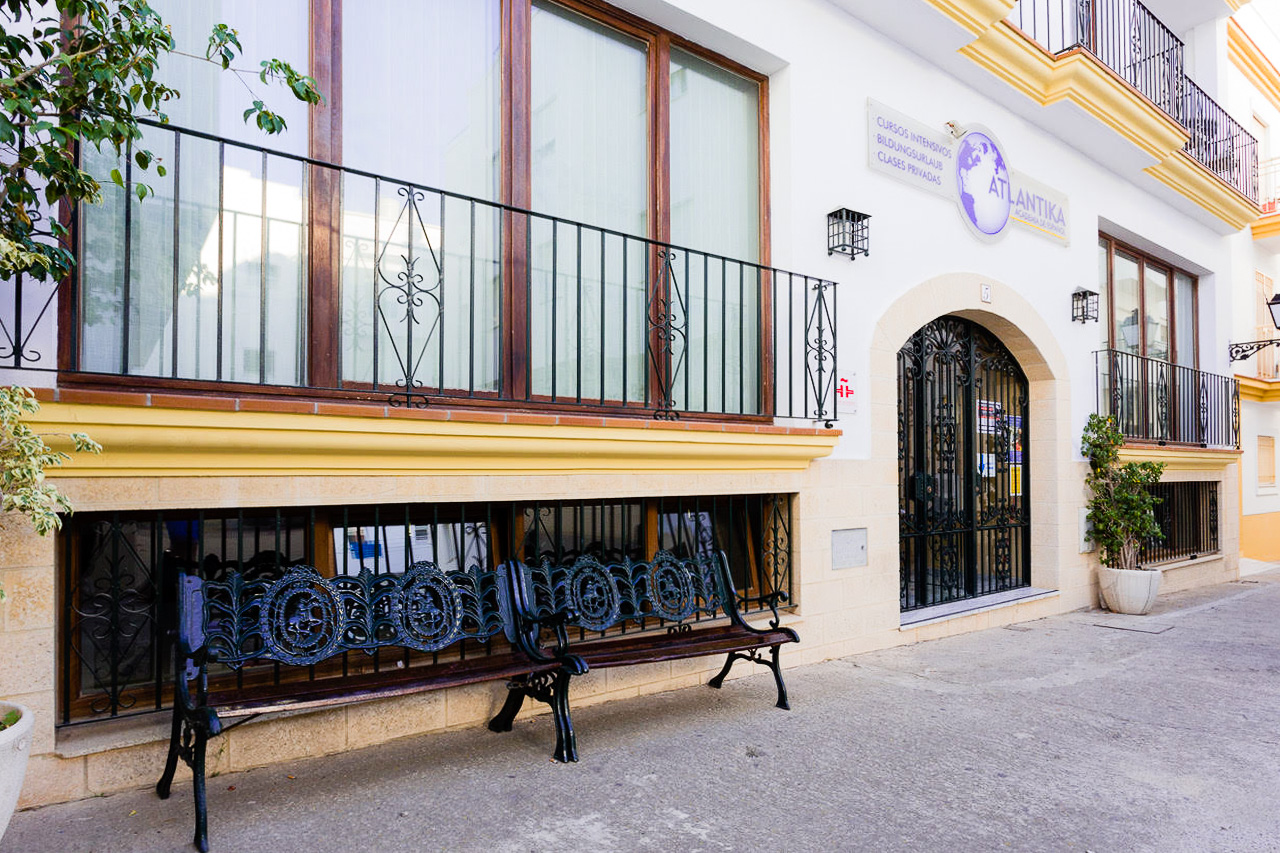
Atlántika - Inglés
Levels - Preschool, A1, A2, B1, B2, C1 and C2.
Atlántika inglés prepares students for the Cambridge English Exams.
Learn More
Levels - Preschool, A1, A2, B1, B2, C1 and C2.
Atlántika inglés prepares students for the Cambridge English Exams.
Learn More
Evidence has shown that Conil, as a settlement, dates back to pre-Phoenician times. Indeed, cultural relics from the Paleolithic, Neolithic and Bronze Ages have been found along the coast. Gibraltar is, of course, famous for its remains of Neanderthal man (2). People migrated from the south and, then, from the north to this, then unnamed, land. The discovery of artifacts shows that pre-classical peoples were hunter-gatherers with there is also some evidence of pastoral activity. It may be argued that the fertile soil, the mild climate and the sea provided the factors that initiated the first settlement as the richness of natural resources permitted a sedentary existence and settlement for these early migrants. The first Iberians founded a string of small settlements along the coast of which traces have been found at La Roche, El Roqueo, La Torre del Puerco and Fontanilla.
Conil evolved into a settlement within the territorial domain of semi-mythical Tartessos(3) which was renowned for its Bronze Age metal work using the local resources of sulfur, silver and tin, which, by the way, naturally gave rise to the some of the first metal coins as a means of exchanging goods rather than barter(4). Trade, around the beginning of the first Millennium BC with the early Phoenicians produced a constructive synergy between Iberian resources and Phoenician expertise, and not only was metal (especially bronze) exported but the fishing and conservation of tuna started with imported Phoenician skills. The exact location of Tartessos is not known except that it was around the delta of the Rio Guadalquivir. Legend has it that Tartessos could have been the lost city of Atlantis and that it was destroyed by one of the periodic tsunamis that afflict the Cádiz coast (the last one being the result of the devastating Lisbon Earthquake of 1755).
Tartessos was succeeded by the Turdetani(5) people who also flourished because of their mineral resources and metal working capabilities. Settlements such as Conil (now called by the Phoenician name, Cybion – hence the current name for the calle Cybion in Conil) were grouped into small kingdoms called Oppidum. Because of inter-kingdom rivalries for land and trade routes, Conil, as an important resource for fish and agriculture as well as a port (because of its river), would have passed from one to the other, probably from the kingdom of Gades (Cádiz) to the kingdom of Asido (Medina Sidonia) and back again (not unlike the later fluctuating Andalucian frontier between the Moors and the Christians during the Reconquista.
Note:
(2) The slow realization, that the discovery of the Neanderthal remains in Gibraltar indicated another race of humans, meant that the name was derived from the later discovery of the same race of humans in the Neander Valley in Germany. Otherwise Neanderthal man could have been known as “Gibraltar Man”.
(3) Tartessos was a semi-mythical harbour city and cultural area of people in the Bronze Age at the mouth of the Guadalquivir River. It appears in records from Greece and the Middle East from the first millennium BC. Herodotus describes it as “beyond the Pillars of Heracles” (the Strait of Gibraltar). Roman authors confirm this but it would appear that by around 1000 BC the name Tartessos had fallen out of use and the city may have been lost under the sea. The Tartessians were rich in metal. In the 4th century BC, the historian Ephorus describes "a very prosperous market called Tartessos, with much tin carried by river, as well as gold and copper from Celtic lands”. Trade in tin was very lucrative in the Bronze Age, since it is an essential component of true bronze and is comparatively rare. Herodotus refers to a king of Tartessos, “Arganthonios”, presumably named for his wealth in silver.
(4) The use of coins signifies not only an advance in civilization but also a division of labour enabled by a surplus of natural resources as well the advent of accounting and a hierarchical society.
(5) The Turdetani lived in the valley of the river Guadalquivir (that the Turdetani called the river by two names: Kertis and Rérkēs, while the Romans would call the river by the name Baetis) in what was to become Baetica, the Roman Province of Hispania which is now modern day Andalucia. Strabo considers them to have been the successors to the people of Tartessos and to have spoken a language closely related to the Tartessian language. They were finally subsumed into the Roman Empire with the Roman conquest of Hispania by Cato the Elder in 193 BC .